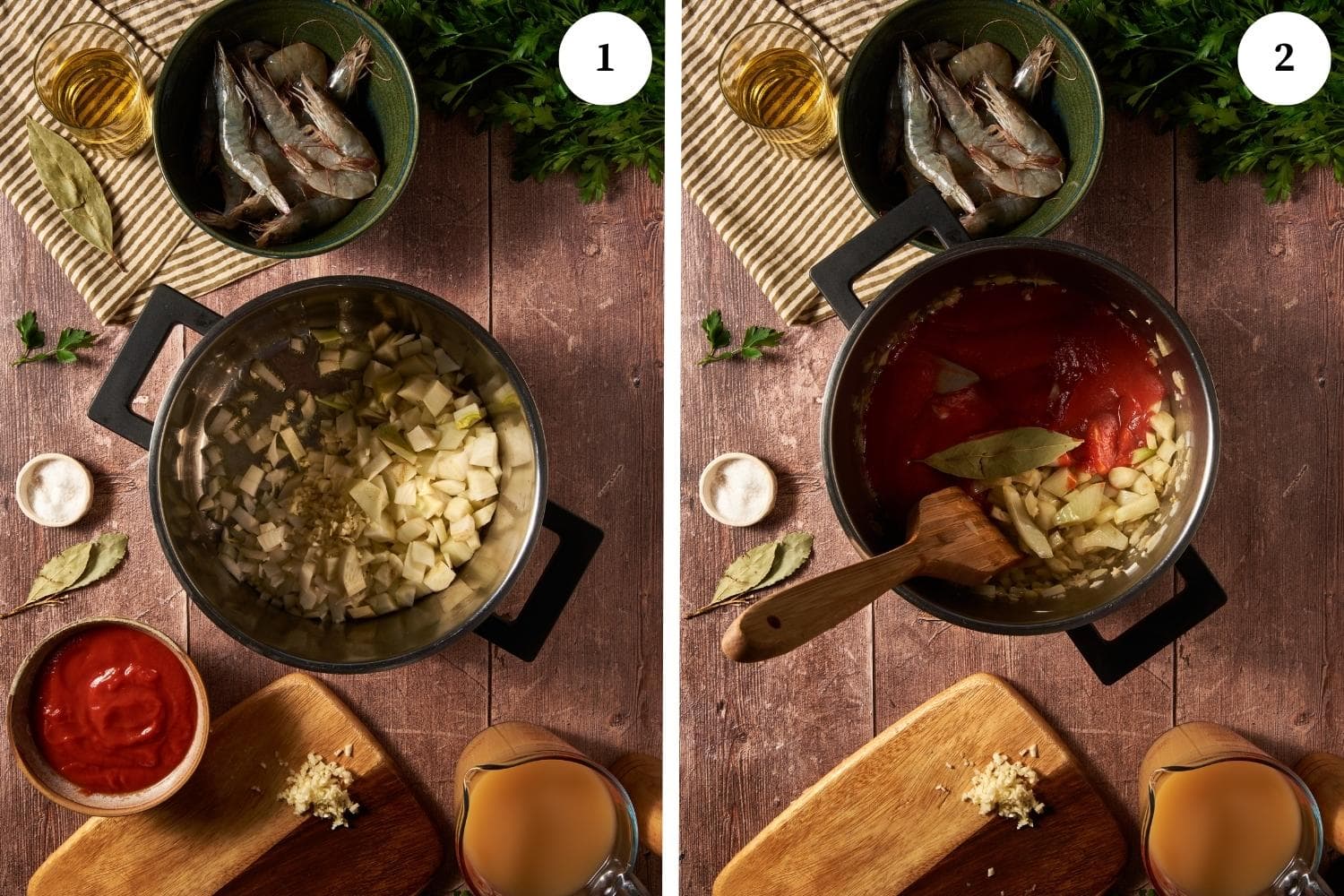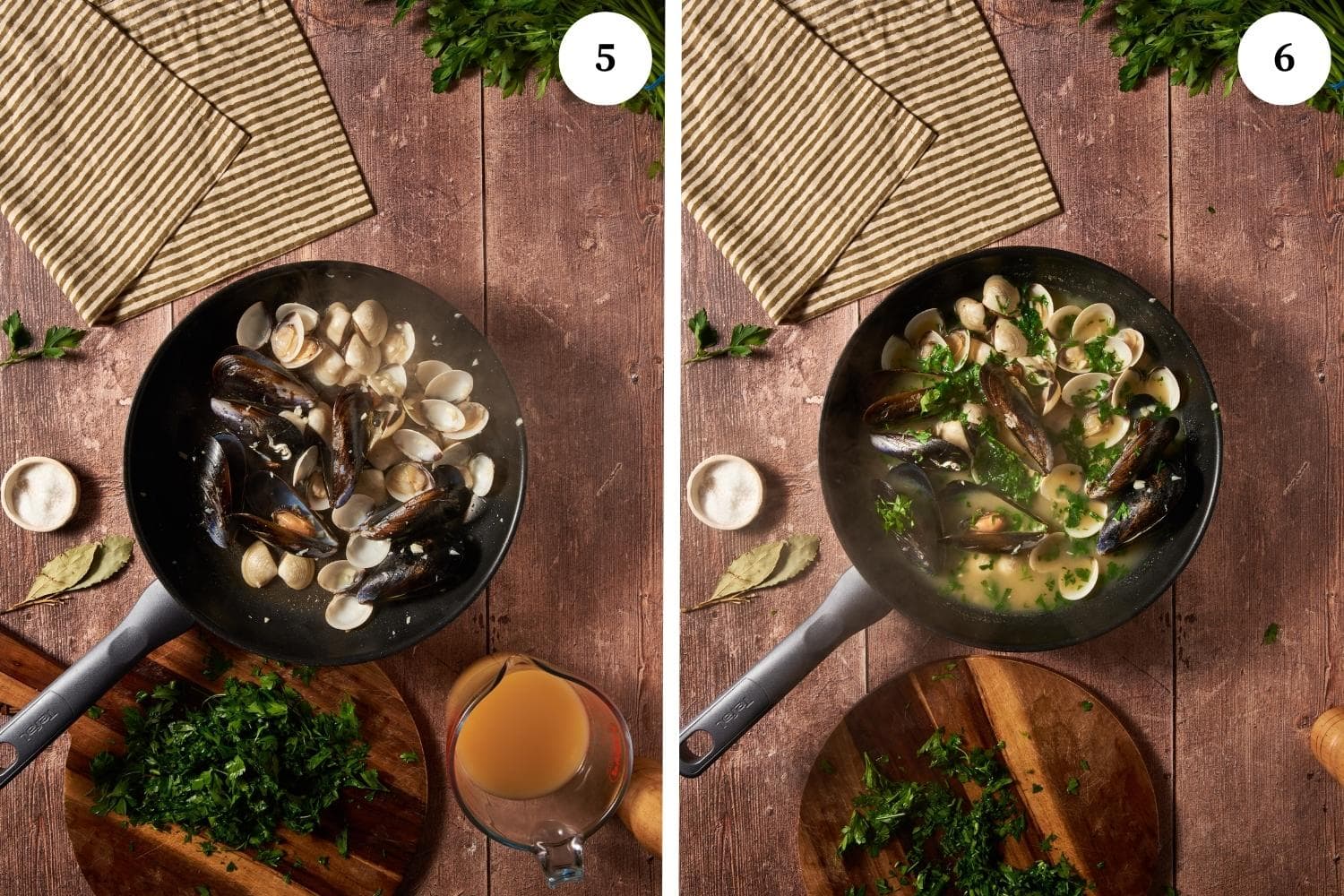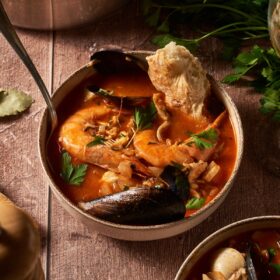Made with the freshest seafood possible in a flavorful tomato-based fish broth, this Italian-American Cioppino Recipe is incredible! It’s a special dish that was crafted in San Francisco and is often served around the holiday season to recognize the Feast of the Seven Fishes.

The stew is layered with complex flavors and enough different types of fish and shellfish to overflow your bowl with deliciousness, yet it’s actually quite easy to make in just under an hour.
Cioppino is a classic Italian-American seafood stew that hails from San Francisco, California. It’s said to have been created in the late 1800s by fishermen who were Italian immigrants from Genoa and had settled in the North Beach area. The stew was an economical way for them to make use of what they caught that day and the flavor profile was crafted to remind them of home.
The stew is basically a smorgasbord of seafood in a delicious broth composed of fish stock and tomato sauce with a bit of white wine and fresh fennel that gives the stew a wonderful refined finish. Cioppino is always made with several different types of seafood such as fish, shrimp, scallops, crab legs, clams, and mussels. However, any choice of seafood can be used and most Italian-American families have their own recipes that they make for special occasions.
Having lived in San Francisco for over a decade, I’ve had the pleasure of experiencing cioppino numerous times in various restaurants across the city. Each establishment boasts its own unique take on the dish, proudly claiming theirs to be the best. While I don’t have a particular favorite, a memorable experience was enjoying cioppino at the Cliff House when my parents visited in 2017. The blend of flavors in their version was a delightful representation of this San Franciscan culinary gem.
Yet, while it may not have its actual roots in Italy, everything about cioppino is based on the fundamental principles of Italian cooking such as only using the freshest and best quality ingredients possible. In fact, the dish gets its name from a similar dish called ciuppin that comes from the Liguria region of Genoa, Italy.

To begin, heat 2 tablespoons of the extra virgin olive over medium-high in a large pot. Then saute the onion, fennel, and half of the garlic for a few minutes (photo 1).

Once the vegetables have been sauteed, add the tomato sauce and bay leaf to the pot (photo 2). Then bring the mixture to a simmer and let it cook for 10 minutes. Next, add the white wine and half of the fish stock (photo 3).
With the broth made, add the fish pieces and prawns. Now, cook the stew over medium heat for 15 minutes without stirring.

Heat the remaining 1 tablespoon of olive oil in a separate saucepan over medium-high heat. Next, saute the shellfish along with the rest of the garlic for 1 minute. Then add most of the chopped parsley and the other half of the fish stock to the pot and cook until most of them open up. Discard any shellfish whose shells do not open.

To complete the stew, add the shellfish mixture to the pot with the fish. If using, add the crab at this time and simmer everything together for 5 minutes. Then taste and season with salt and pepper.

Now, garnish the seafood stew with some fresh chopped parsley and serve immediately with some fresh homemade crusty bread like my Italian Ciabatta and red pepper flakes if you like.

Other soup recipes to try:
Leftovers will keep for up to 3 days in the fridge and up to 3 months in the freezer when stored in an airtight container. To reheat from frozen, it’s best to allow the stew to thaw out overnight in the fridge.
Yes and no. You can make the broth days ahead of time. But I don’t recommend cooking the seafood until the day you plan to serve.
Cioppino is believed to come from the word “ciuppin” which means to chop in the Ligurian dialect. Loosely translated is believed to mean little soup, but you can find differing opinions related to this Italian-American dish.
While the two seafood stews do have some similarities there are distinguishing differences. To begin, Bouillabaisse is French, incorporates saffron into the broth, and is based on a white fish stock with just a few tomatoes added. Whereas, cioppino is a tomato-based seafood stew with no saffron that originated in San Francisco.

